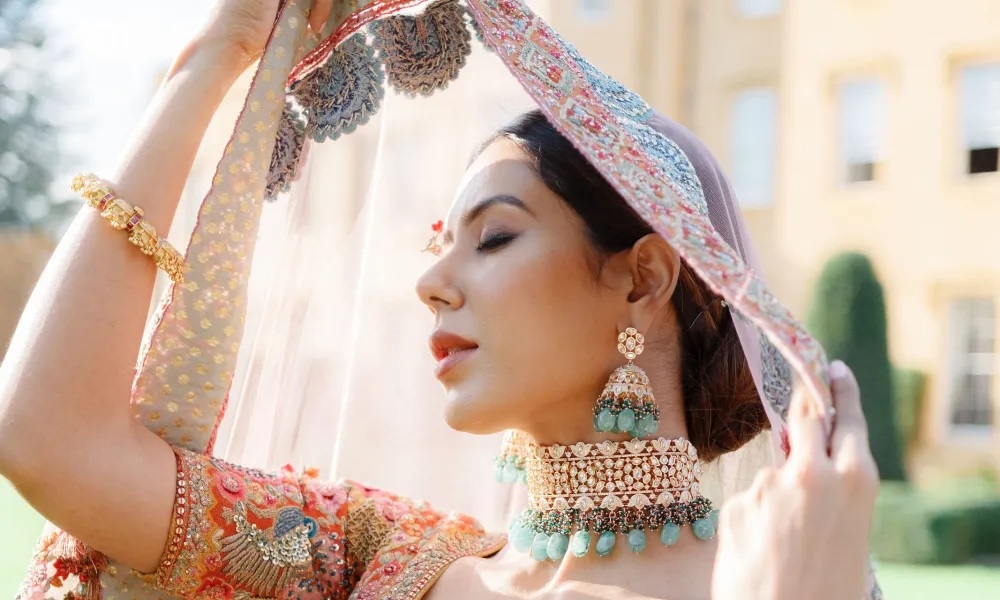Lehenga cholis are vibrant and elegant traditional Indian outfits that are known for their rich colours and intricate designs. The lehenga colour combination plays a crucial role in enhancing its beauty and making a lasting impression. With countless possibilities, choosing the right colour combination can be an exciting and creative process.
One popular lehenga colour combination is the classic pairing of red and gold. Red symbolizes love, passion, and auspiciousness in Indian culture, while gold represents wealth and prosperity. This combination creates a striking and regal look, often adorned with intricate golden embroidery or embellishments. Another popular choice is the fusion of blue and silver. Blue signifies tranquillity and spirituality, while silver adds a touch of elegance and grace. This combination is particularly popular for evening functions and can be beautifully complemented with silver jewellery. For a contemporary and unconventional look, pastel shades like mint green and peach have gained popularity. These soft and soothing hues create a refreshing and youthful appearance. Pastel-coloured lehengas are often embellished with delicate floral patterns or intricate beadwork, adding a touch of femininity and grace. Few other stunning lehenga colour combinations include royal purple and gold, vibrant pink and orange, and earthy tones like maroon and olive green. These combinations offer a unique blend of tradition and modernity, allowing individuals to express their personal style while honouring cultural heritage.
Thus, the lehenga colour combination is an essential aspect of its overall appeal. Whether opting for traditional or contemporary colours, each combination has its charm and allure.
Kurtis: Effortlessly Chic, Always in Style!
Kurtis are versatile and comfortable garments that have gained immense popularity among women in India and around the world. They come in a wide range of styles, each offering a unique look and appeal. Some of the popular types of kurtis are:
- Anarkali Kurti: Inspired by the Mughal era, Anarkali kurtis are known for their flared silhouette. They usually have a fitted bodice and a flowy, voluminous skirt that creates a graceful and regal look. Anarkali kurtis are often adorned with intricate embroidery or embellishments, making them perfect for festive occasions.
- Straight Kurti: As the name suggests, straight kurtis have a straight and simple silhouette. They are characterized by their clean lines and minimalist design. Straight kurtis are versatile and can be worn for both casual and formal occasions, depending on the fabric and embellishments.
- A-line Kurti: A-line kurtis have a fitted bodice that gradually flares out towards the hem, resembling the shape of the letter “A.” This style is flattering on most body types and offers a balanced and elegant look. A-line kurtis are suitable for various occasions, from office wear to casual outings.
- Shirt Kurti: Inspired by men’s shirts, shirt kurtis have a collar and button-down front, resembling a shirt. They are usually made of cotton or linen fabrics, making them comfortable and perfect for everyday wear. Shirt kurtis can be worn with leggings, trousers, or even as a dress.
- High-Low Kurti: High-low kurtis feature a hemline that is shorter in the front and longer at the back. This asymmetrical style adds a modern and fashionable touch to traditional kurtis. High-low kurtis are great for creating a trendy and chic look.
These are just a few examples of the various types of kurtis available in the market. Each style offers a different aesthetic and can be customized with different fabrics, prints, and embellishments to suit individual preferences.






